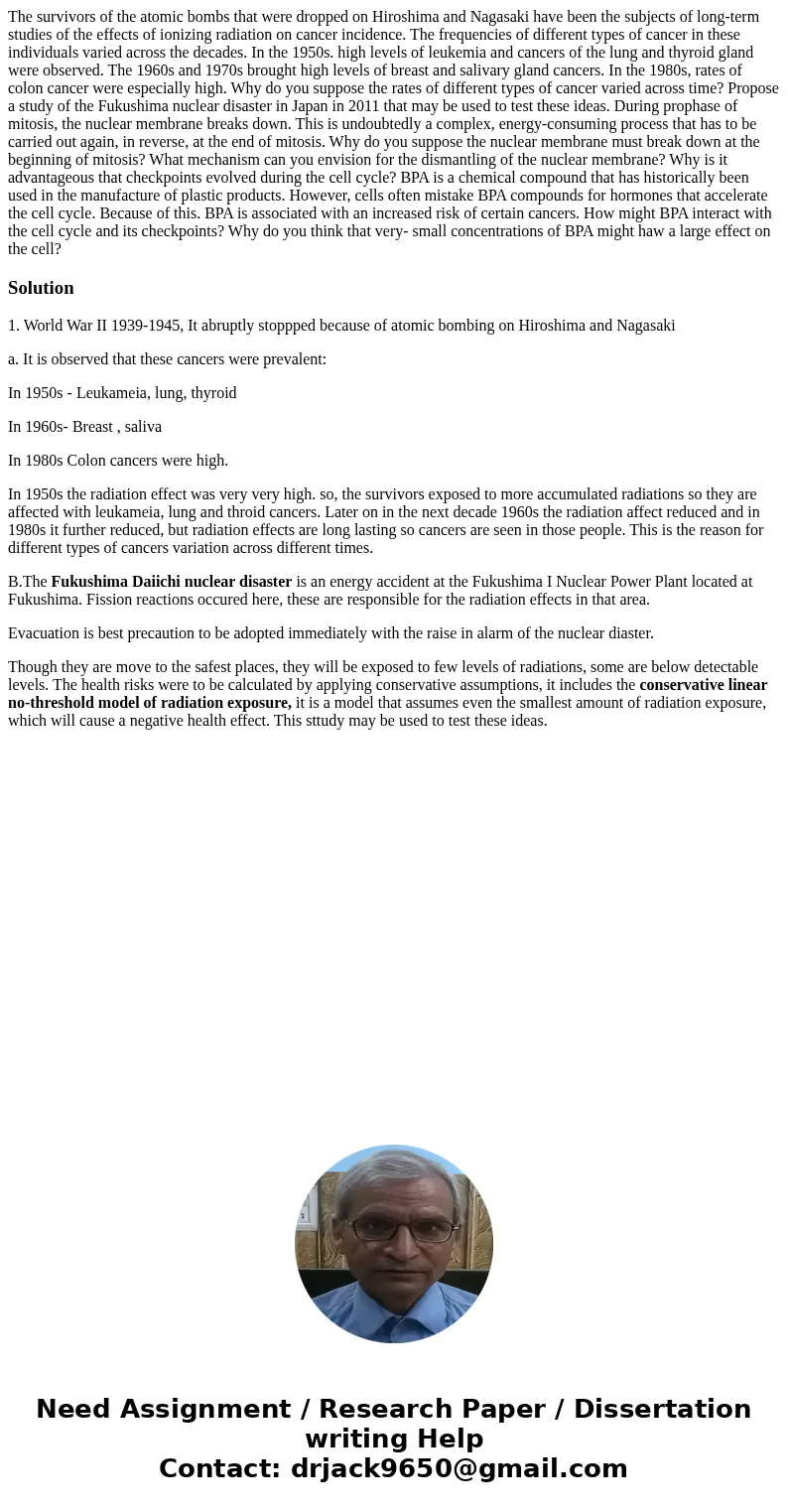The survivors of the atomic bombs that were dropped on Hiros
Solution
1. World War II 1939-1945, It abruptly stoppped because of atomic bombing on Hiroshima and Nagasaki
a. It is observed that these cancers were prevalent:
In 1950s - Leukameia, lung, thyroid
In 1960s- Breast , saliva
In 1980s Colon cancers were high.
In 1950s the radiation effect was very very high. so, the survivors exposed to more accumulated radiations so they are affected with leukameia, lung and throid cancers. Later on in the next decade 1960s the radiation affect reduced and in 1980s it further reduced, but radiation effects are long lasting so cancers are seen in those people. This is the reason for different types of cancers variation across different times.
B.The Fukushima Daiichi nuclear disaster is an energy accident at the Fukushima I Nuclear Power Plant located at Fukushima. Fission reactions occured here, these are responsible for the radiation effects in that area.
Evacuation is best precaution to be adopted immediately with the raise in alarm of the nuclear diaster.
Though they are move to the safest places, they will be exposed to few levels of radiations, some are below detectable levels. The health risks were to be calculated by applying conservative assumptions, it includes the conservative linear no-threshold model of radiation exposure, it is a model that assumes even the smallest amount of radiation exposure, which will cause a negative health effect. This sttudy may be used to test these ideas.

 Homework Sourse
Homework Sourse